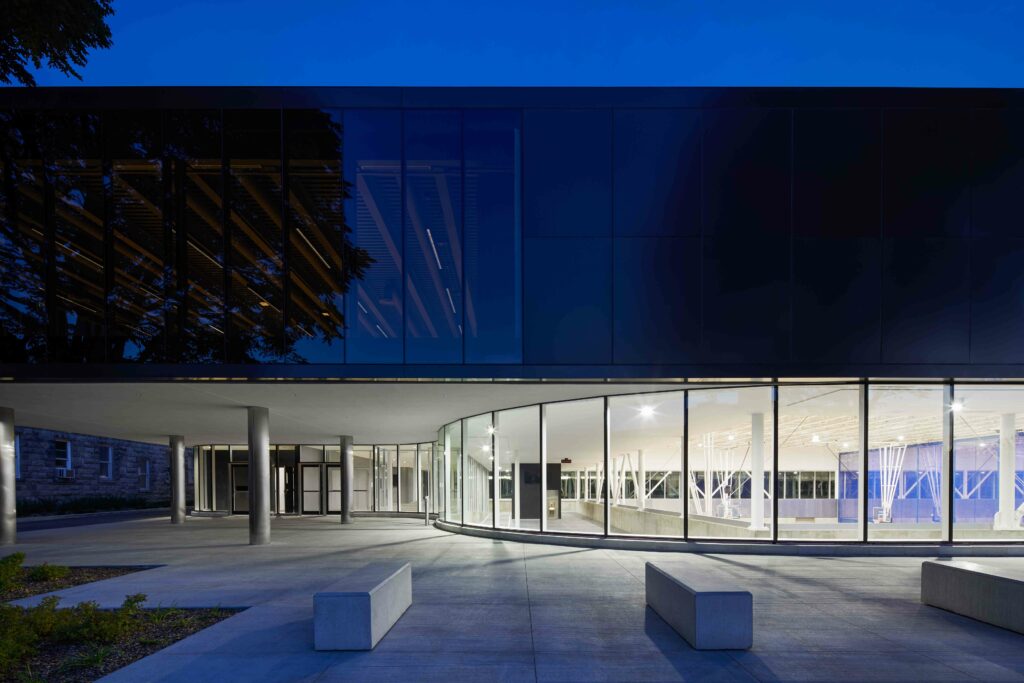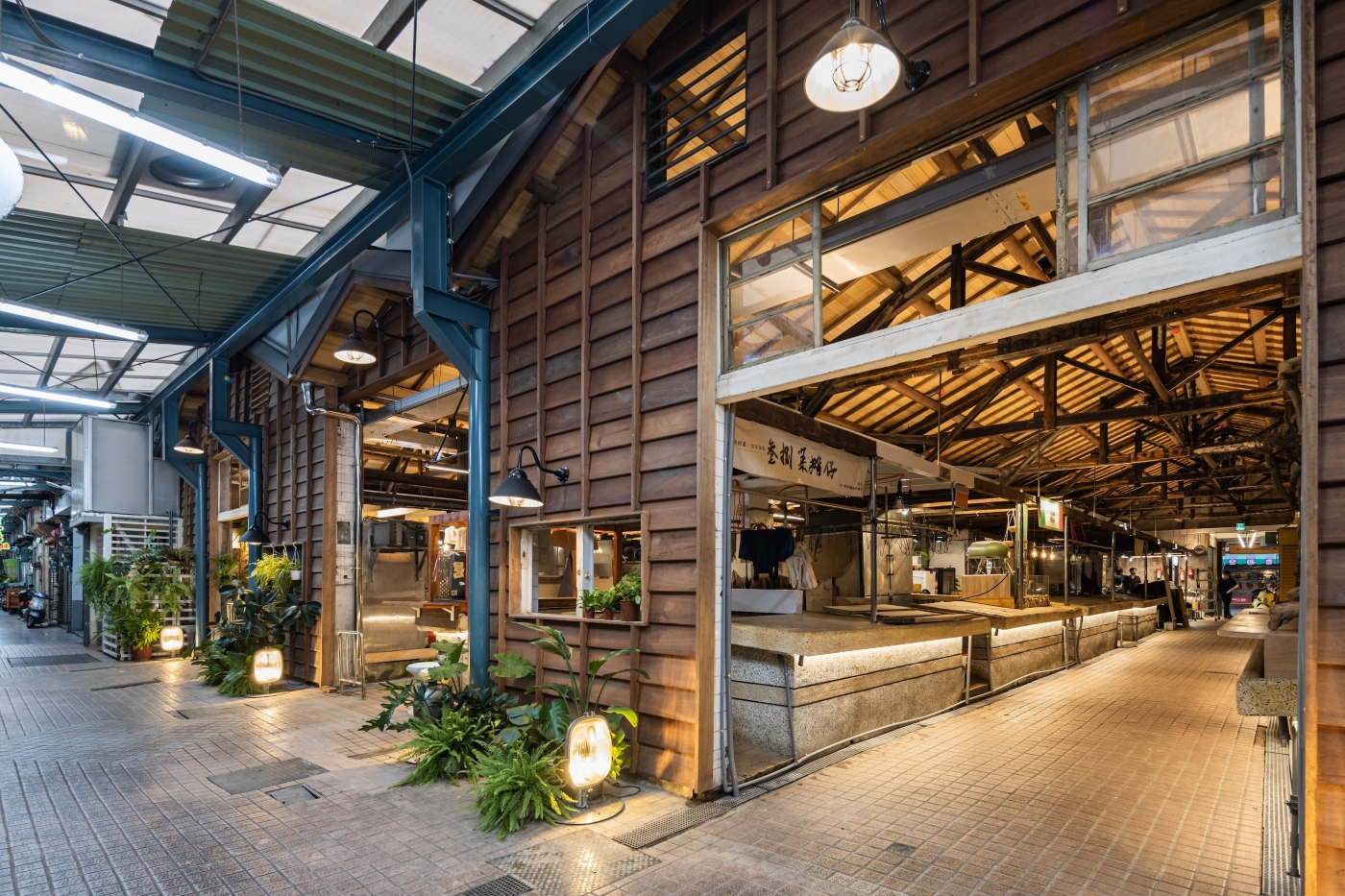Header: Adrien Williams
ACDF Architecture, a Montreal-based, globally-inspired design practice creating experiential buildings that deliver lasting social impacts, proudly presents the Complexe Sportif et Culturel Collège Notre-Dame, a new social epicentre in the beating heart of a campus founded in 1869.
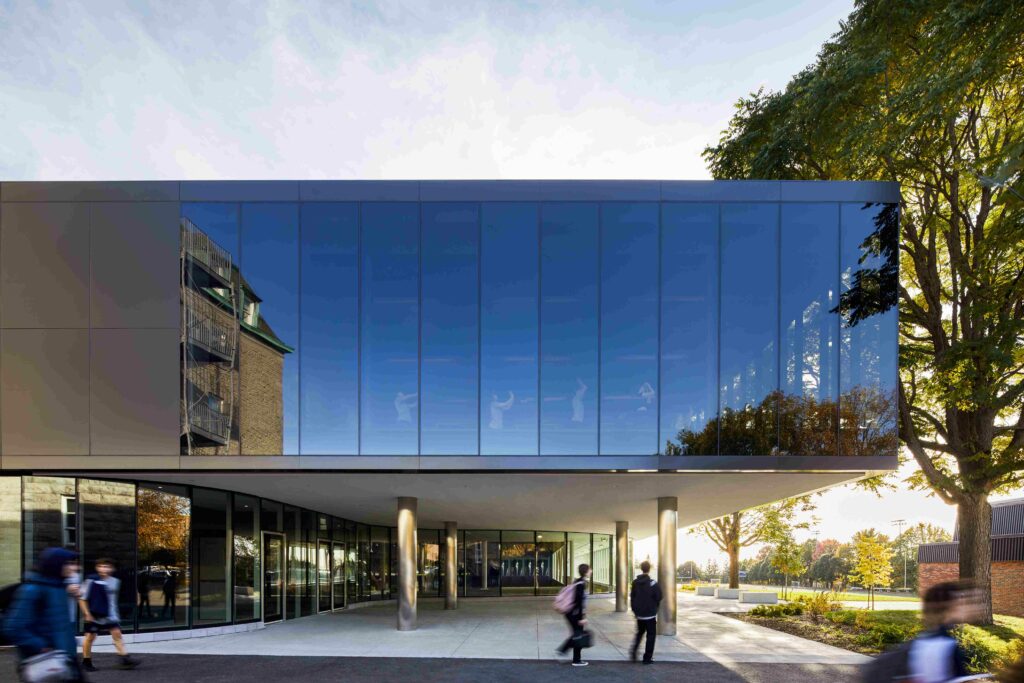
Reinforcing the historic educational institution’s motto of training the mind, the heart, and the body, the new facility houses two double gymnasiums, sports team changing rooms, a training room, a running track, multifunctional rooms for dance and theatre, and a central connector hall. However, given the significant increase in the number of students in recent decades, the sports and cultural facilities at Collège Notre-Dame made it difficult for the institution to maintain its mission.
Collège Notre-Dame commissioned ACDF to design a new sports centre that would bring its student population together and have a positive impact on the daily lives of all students. Accordingly, the new complex is positioned in the heart of the campus, at the crossroads of all pedestrian circulations connecting student life between the institution’s legacy educational buildings and its outdoor sports facilities.
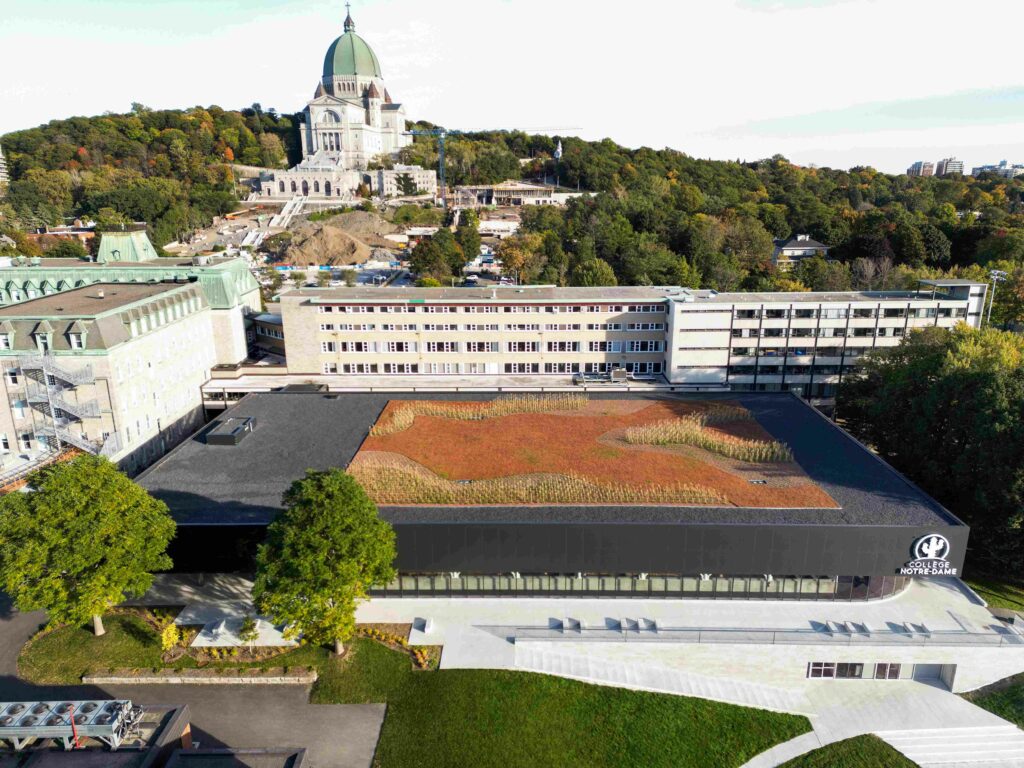
Imbued with a certain architectural sobriety, the new sports and cultural centre is windowed onto the exterior along its entire periphery, creating constant visual relationships between passers-by and users and thereby promoting activities taking place within.
“We approached this project as a very important tool for promoting a greater sense of community among students. We wanted to focus on a central and fully exposed facility that would invoke a greater sense of being part of the overall social vibe of the college.”
Maxime-Alexis Frappier, ACDF President
Heritage first
Collège Notre-Dame forms part of Montreal’s Mont-Royal Heritage Site, a protected area comprising Mont-Royal Park, cemeteries, institutions, residential neighbourhoods, and some of the largest green spaces on the island. That designation placed heritage at the heart of the intervention, echoing the thoughtful design philosophy of ACDF.
Collège Notre-Dame’s expansive campus includes legacy heritage buildings that reflect varying eras of English and French-inspired architecture, including initial buildings built in the 1880s and subsequent expansions completed in 1929. Major extensions were again added in the 1960s, infusing modernist architectural language into the campus. Remarkably, eclectic architectural styles have evolved as a set of harmonious buildings, and ACDF endeavoured to continue that legacy within the structure of a contemporary architectural concept.
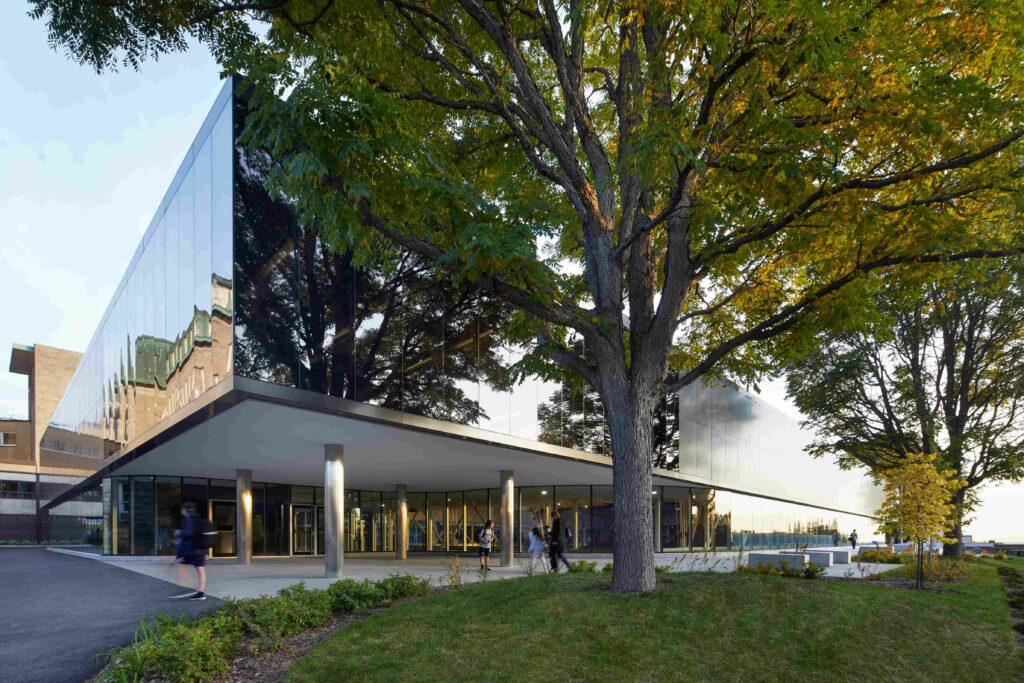
Opening a window onto campus life
ACDF applied a horizontal language to the design of a massive rectangular building, with an upper level characterised by an opaque façade of anthracite-coloured aluminium panelling that conceals the facility’s mechanical systems in its corners. The rectangular upper level protrudes beyond the borders of a lower level, offering protection against direct sunlight and the elements while enabling the penetration of abundant natural light into the building.
The lower level features a fully-glazed façade of curtain walls, providing direct views from the pedestrian level to overlook activities taking place inside the new facility. Rounded corners create an oval shape for the fully-glazed lower level, injecting a greater sense of fluidity into circulation patterns around the building. Directly above the main entrance to the complex, the aluminium panelling of the upper-level blends seamlessly into darkly tinted glass, highlighting activities unfolding in the complex’s multifunctional rooms, including dance, improvisation, theatre, fencing, and more.
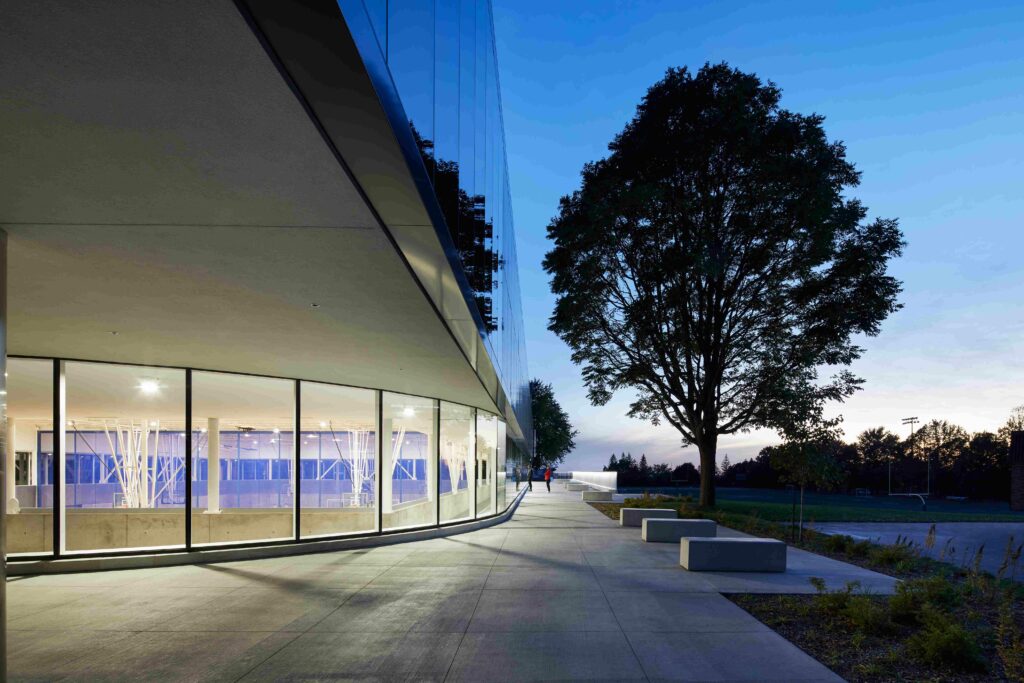

The integration of a massive structure
Built on the Sacré-Cœur courtyard, on a downward slope descending from the campus’s main buildings, across the courtyard, and down to the football field, ACDF leveraged the challenging topography to excavate the site and erect half of the building underground, where two double gymnasiums and locker rooms are housed. In addition to being cost-efficient, minimising the building envelope helped soften the intrusion of the massive new complex by rendering it on a more human scale that is less imposing.
The uneven topography also presented an opportunity to erect a natural stone wall along the lowest levels of the building, directly beneath the fully-glazed façade. The selection of natural stone pays homage to the architectural styles and palette of the surrounding heritage buildings, while further integrating the new complex as a central and unifying element of the campus. An expansive green roof caps it all off, with high visibility from all of the surrounding classrooms and study halls of the college.
“Such an enormous roof provided us with ample opportunity to introduce sustainable elements. We decided on a large green roof that would not only collect and recycle rainfall but also add a visual connection to nature as a reminder of the site’s inclusion in the natural heritage just outside of its walls.”
Maxime-Alexis Frappier, ACDF President
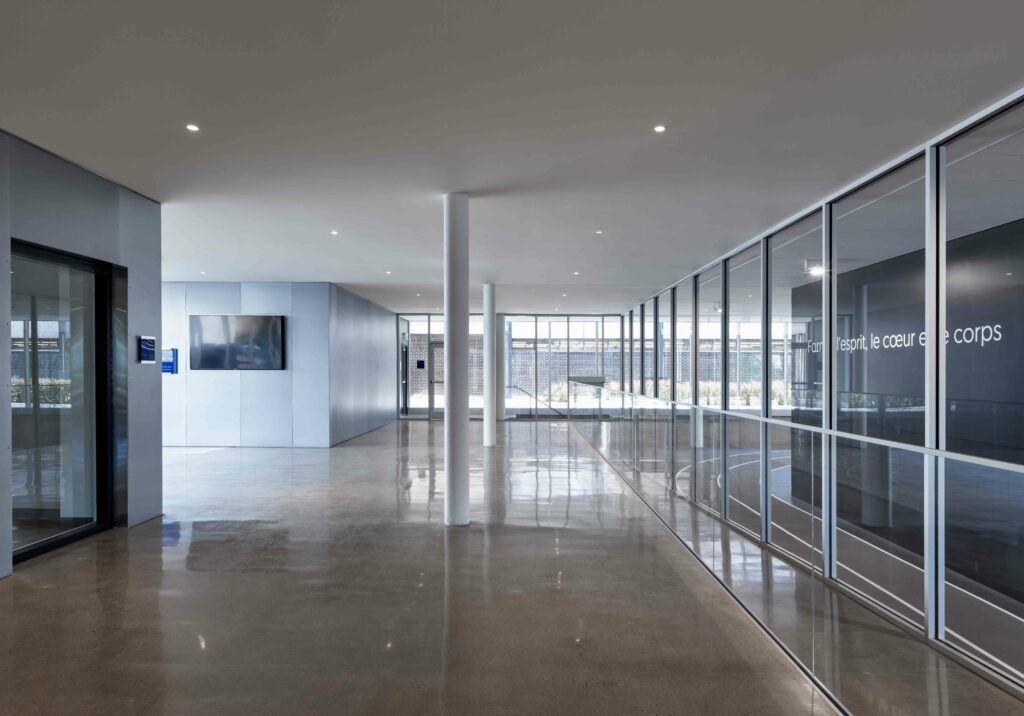
Bidirectional vibrancy
Inside the new complex, a 360-degree running track rings the entire building at the main pedestrian level. The track encircles two sunken double gymnasiums, and the installation of an acoustic ceiling above masterfully calms the collective vibrancy of the environment. The fully-glazed façade provides a window onto all of it for passersby and, conversely, also connects track users and others on the inside with the surrounding external landscape and pedestrian traffic of campus life.
“More than just a building, the new complex pays tribute to the Collège Notre Dame mission. It is designed to make students feel that they are part of something special, in the heart of the action, whether they are playing a sport, rehearsing theatre, or simply making their way across the campus.”
Maxime-Alexis Frappier, ACDF President

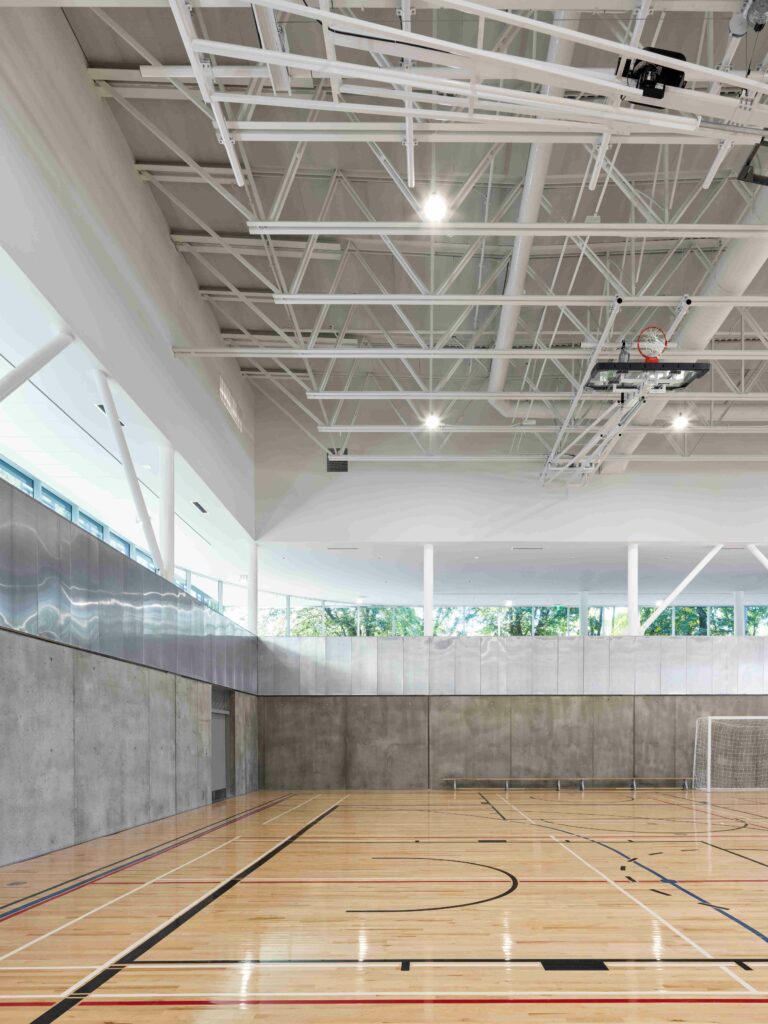
A source of pride
After breaking ground in October 2020, the Complexe Sportif et Culturelle Collège Notre-Dame was completed in December 2022. The new complex adds a 21st-century chapter to the institution’s illustrious history, with an infusion of contemporary design and materiality that blends with existing buildings to unify the sprawling campus. Beyond a typical architectural response, the new complex contributes to the social fabric of Collège Notre-Dame in a significant way. That social aspect played a major role in ACDF’s approach and decision-making throughout the project, ensuring a final product that will deliver positive impacts on the daily lives of students for years to come.
“This project is a shining example of how the power of architecture and design can convey values and facilitate inclusion, fraternity, and diversity. We are very proud of the future that lies ahead for this building as a tool for communicating and motivating as an extension of the learning process.”
Maxime-Alexis Frappier, ACDF President
